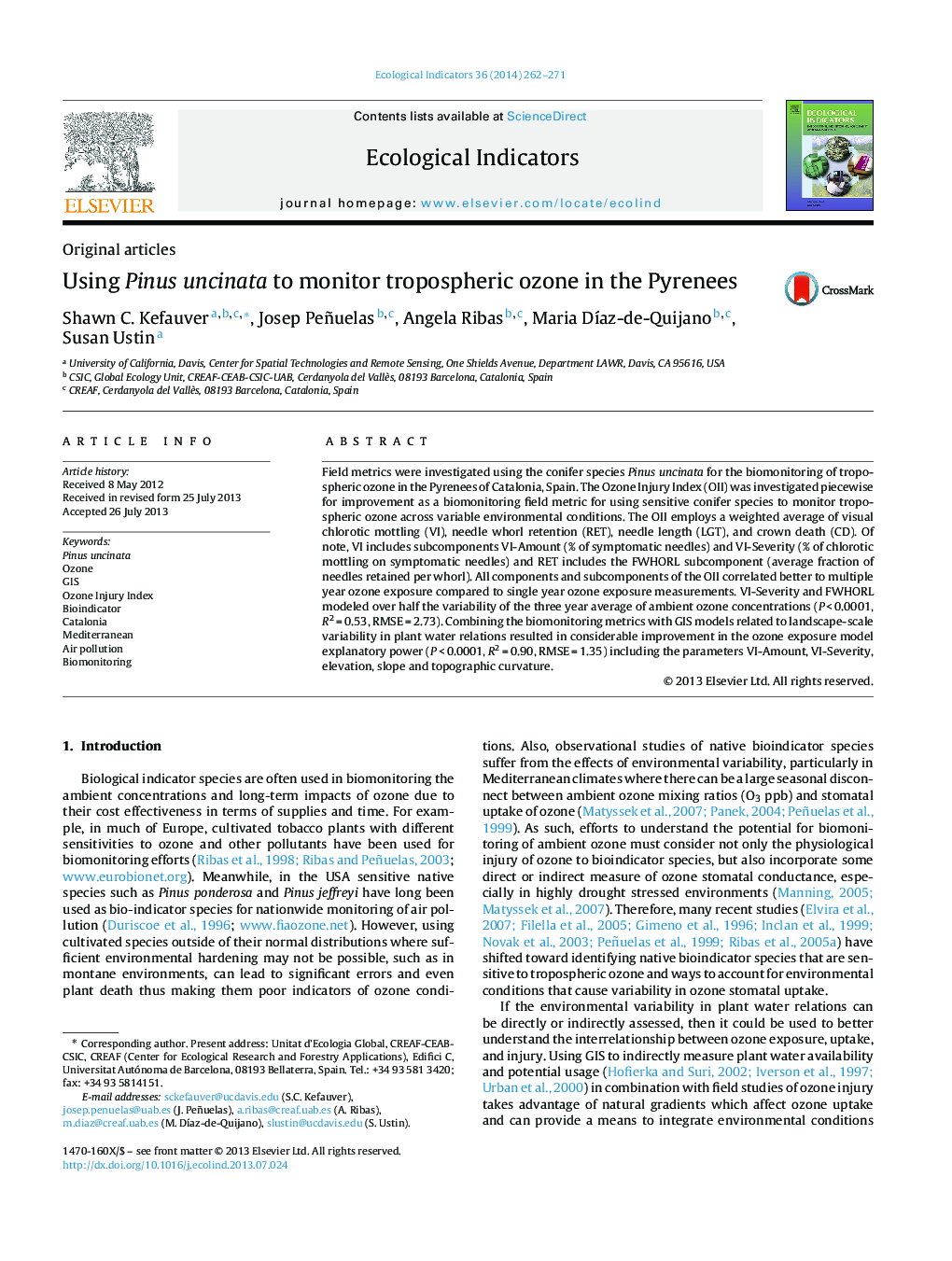| Article ID | Journal | Published Year | Pages | File Type |
|---|---|---|---|---|
| 4373318 | Ecological Indicators | 2014 | 10 Pages |
•The Ozone Injury Index was adapted for biomonitoring ozone using Pinus uncinata.•Combining with GIS improved biomonitoring with environmental variability.•Multiyear analyses correlated best to cumulative ozone exposure symptoms.
Field metrics were investigated using the conifer species Pinus uncinata for the biomonitoring of tropospheric ozone in the Pyrenees of Catalonia, Spain. The Ozone Injury Index (OII) was investigated piecewise for improvement as a biomonitoring field metric for using sensitive conifer species to monitor tropospheric ozone across variable environmental conditions. The OII employs a weighted average of visual chlorotic mottling (VI), needle whorl retention (RET), needle length (LGT), and crown death (CD). Of note, VI includes subcomponents VI-Amount (% of symptomatic needles) and VI-Severity (% of chlorotic mottling on symptomatic needles) and RET includes the FWHORL subcomponent (average fraction of needles retained per whorl). All components and subcomponents of the OII correlated better to multiple year ozone exposure compared to single year ozone exposure measurements. VI-Severity and FWHORL modeled over half the variability of the three year average of ambient ozone concentrations (P < 0.0001, R2 = 0.53, RMSE = 2.73). Combining the biomonitoring metrics with GIS models related to landscape-scale variability in plant water relations resulted in considerable improvement in the ozone exposure model explanatory power (P < 0.0001, R2 = 0.90, RMSE = 1.35) including the parameters VI-Amount, VI-Severity, elevation, slope and topographic curvature.
